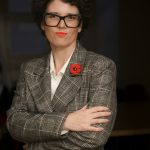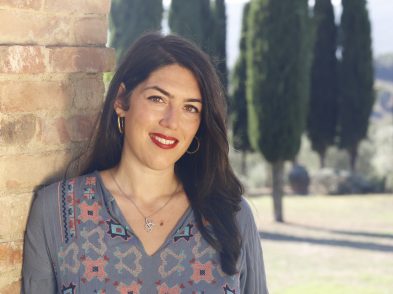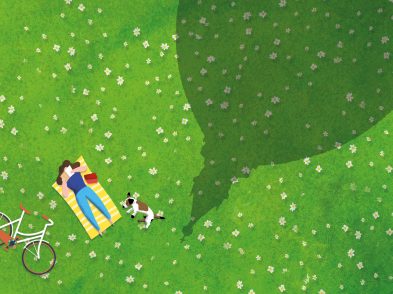On a sultry summer night, culture lovers gathered in the concert hall at Palazzo Corsini al Prato for a student showcase of choral music. Organized by Fondazione Mascarade Opera, the Florence Choral Course welcomed 24 aspiring singers from around the world for an intensive week of advanced training. From pieces by Giovanni Pierluigi da Palestrina to Augustinian nun Vittoria Aleotti and Peccavi Super Numerum a 12, a Renaissance motet by an unknown Florentine composer, the varied repertoire beguiled the audience with its little-known history and musicality. The Florentine speaks with course director Mark Spyropoulos.
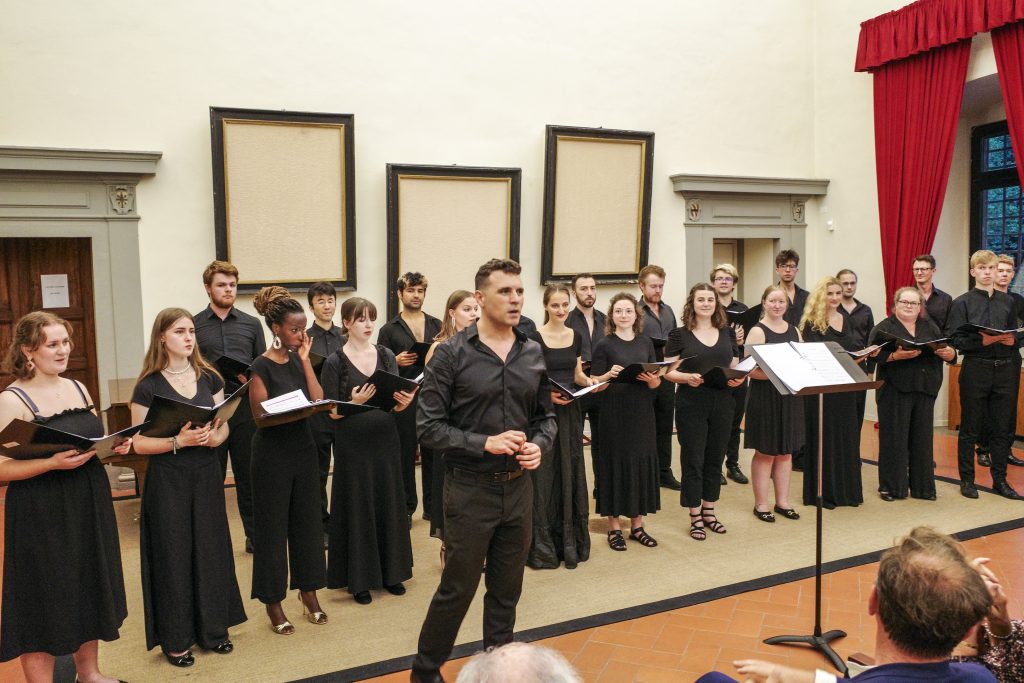
Tell us about this year’s Florence Choral Course.
This year, our students came from 12 countries as far away as Chile, Nicaragua, Japan and Kenya. Music is an amazing way of bringing people together, particularly singing, because it’s not through the medium of an instrument. When you hear me sing, you literally feel the vibrations of my body in your body. When you have that many singers together, it creates an amazing harmony, literally and metaphorically.
What does the week look like?
On the Monday, we greet them at the first rehearsal with a glass of prosecco (to help break down the barriers) and then we go straight into the singing, hitting the ground running with the most challenging pieces. After an exciting (and tough!) first rehearsal, our resident historian and Medici scholar, Rose Byfleet, takes the students on a walking tour around Florence. The art, architecture and music are all part of the same Renaissance zeitgeist. That’s a part of the puzzle that many of the singers often don’t know much about, especially if they are from further afield. The real detailed work begins on the Tuesday with a full vocal warm-up and the first day of rehearsals. Alongside that, they all have individual singing lessons, so they are working on their own voices at the same time. Our assistant conductor Daniel Turner also works on more technical aspects: singing in tune and the mechanics and telepathy, as it were, of choral music. The opportunities granted to these students are exceptional: they sing at Palazzo Tornabuoni in the room where the first opera was performed, as well as mass in the basilicas of Santissima Annunziata, Santo Spirito, plus Milan Cathedral, where they even did a masterclass before seeing the priceless 500-year-old music collection in the archives. During the week they also hear lectures by historians of the sixteenth century and visit some of Florence’s most iconic monuments.
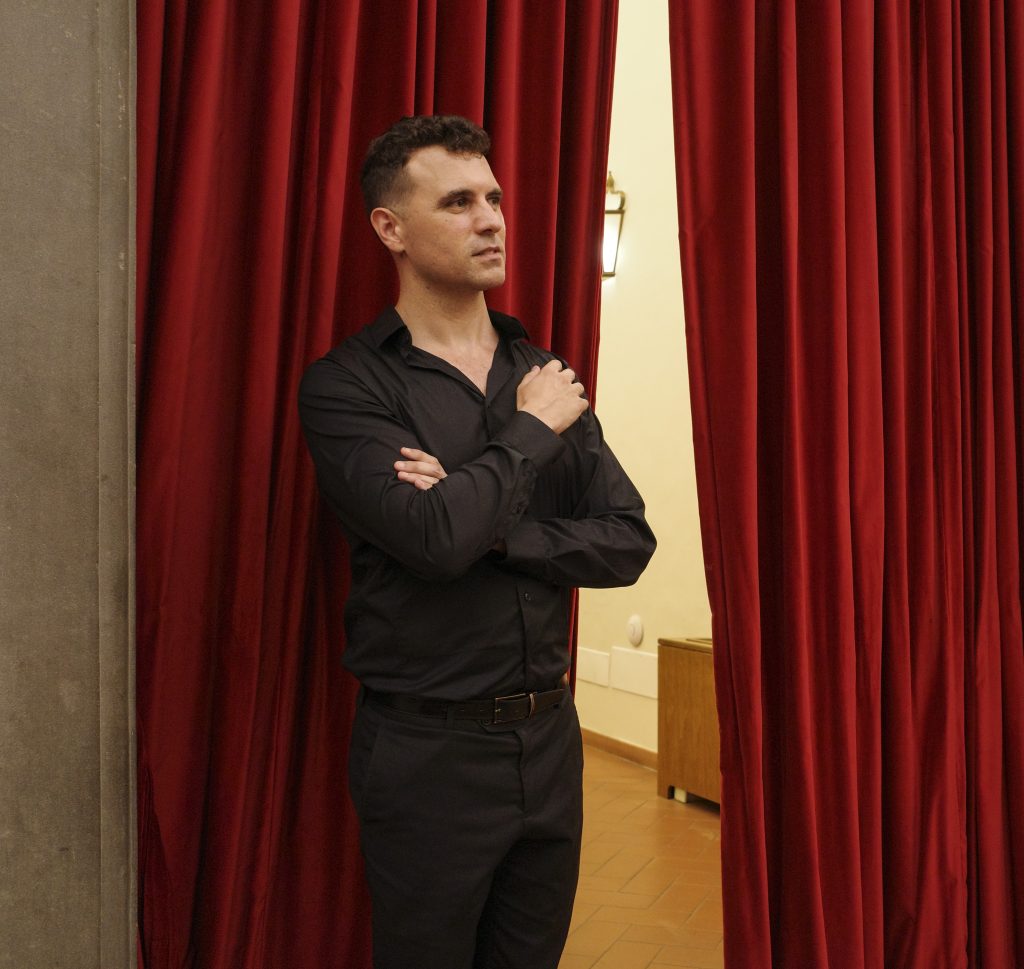
Tell us about how you came to choral music.
I was a chorister at Worth School in the south of England before going on to study at Trinity College Dublin, where I sang in the Anglican tradition at St. Patrick’s Cathedral. I returned to London with a view to becoming an opera singer and I went to the Guildhall School of Music. I would sing all over London and abroad, wherever anyone would pay me to do so, whether it was high opera or somebody’s birthday party! As a student, I worked as the Flower Presenter at the Royal Opera House, Covent Garden. A wonderfully ridiculous job that involved closing the curtain and organizing the flowers. Every night, I was on the side stage, watching the world’s greatest singers and dancers, like Placido Domingo, Angela Gheorghiu, Renée Fleming, everybody. Some of these astonishing artists were even kind enough to give me lessons. It gave me insight into the level of professionalism of an artist of that calibre. When you are starting out as a singer, you have to find your repertoire. For me, I knew I had a voice, but I couldn’t place it. I came to Italy and I was offered an opera in Venice, but it wasn’t for a few months, so they sent me to Rome, and in Rome I was referred to Maestro Massimo Palombella, the Sistine Chapel Choir director, who essentially said to me, “Can you start on Thursday?” During a consultation, he opened the doors and there was the entire Sistine Chapel Choir. He said, “Go join the basses.” That was an extraordinary time. I was 30. Up until that point, I had been a freelance singer, subsidizing my income selling perfume in Harrods. One week I was selling perfume and the next I was singing for the Pope. I found my repertoire, but it wasn’t opera; it was the sixteenth-century polyphony. While I was at the Sistina, Maestro Palombella was reforming the choir and we made four recordings for Deutsche Grammophon. I was the first British singer to join the Sistine Chapel Choir, so there was a bit of interest in me.
Was there any pushback or were you embraced with open arms?
They were very kind to me and I was welcomed very generously. In the beginning, some of the older singers were a bit perturbed, perhaps because they had been there for a long time and it’s very much not just an Italian, but a Roman institution. But due to my choral experience in the UK, Maestro Palombella was keen to have an ingredient of that Anglican tradition. We toured the world with the mission of bringing the Sistine Chapel Choir back to what it ought to have been. It was the choir of Palestrina and for a long time the “laboratory” of Western harmony. The music of this golden era corresponds exactly to the frescoes of Michelangelo and Perugino. My way of thinking about this music is that this is how the art would sound if the frescoes could sing. In this sense, the music needs not just to be revered, but actually it deserves to be loved.
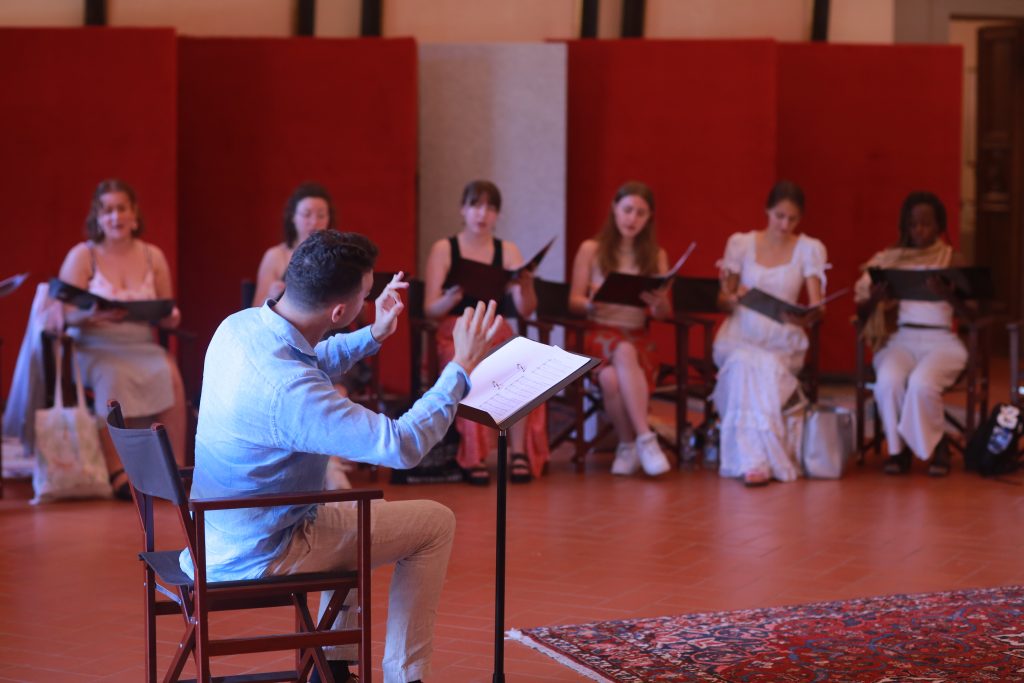
How did you become interested in Florentine Renaissance choral music?
I was singing in the Sistine Chapel with some 20 years of experience of Renaissance choral music, I’d visited Florence as a tourist, and it struck me that I couldn’t name a single Florentine composer. How is it that we have this roll call of the greatest artists of Western history coming from this little town and yet I know nothing of the music? It intrigued me, especially in comparison to Venice at this time with Gabrieli, Monteverdi and the great tradition of San Marco. Florence, city of the Medici and Michelangelo, Bronzino and Botticelli: where is the equivalent in sacred music? It seemed impossible that the Medici had no music. So, I dug a little deeper and of course there has been plenty of research into Medici music, but it’s mainly secular and very little is sacred. Opera was invented in Florence and that fits neatly with the Neoplatonist Medici narrative: the rediscovery of Ancient Greek wisdom sparking the great cultural revival. The idea of sacred music from Florence doesn’t fit neatly with that image and perhaps has therefore been rather dismissed. Add to that the fact that there’s no big name. There’s no Mozart, Bach or Palestrina of Florence. Having said that, if you take the best work by the “minor” composers, you gain a choral soundtrack to the Medici. Much of it is anonymous or incomplete, but no less beautiful.
What does the research process look like?
The late great American musicologist Frank D’Accone did pioneering research into this field and was a great inspiration for me. I then sought opinions from some eminent musicologists from the Universities of Toulouse and Cambridge. Not all of the music is here in Florence. Some of it is now in Venice, Rome and Milan, as well as in Warsaw, Riga, Brussels, Munich and Paris. Pieces have moved around in the intervening centuries for all sorts of reasons. For instance, a Florentine monastery may have been twinned with another monastery in the mid eighteenth century, one of the monasteries may have since closed and the music taken to a centralised national collection. Our work involves tracking down the music. I started this project in 2018, working alongside the brilliant Italian musicologist Dr Giordano Mastrocola. It was important to find someone who understood archives here and could obtain the necessary access. Over the last five years, we have managed to track down a huge amount of Florentine Renaissance choral music. Every week I open my laptop and there’s a pile of motets, much of which may be simply workaday stuff: interesting historically, if not musically, some may be absolutely awful, and some of it is stunningly beautiful. There are times when the music looks busy and interesting on the page, but ultimately rather trite when you put it all together, and times when the music can look like nothing on the page, but put it together and it reveals the work of a master. You have to bear in mind that there are no bar lines, no expression markings and no full scores of music at this time; we only have the individual parts. Added to that, there are lots of notes missing, smudged, lacunae. Whole sections can be missing where the page has been torn away or someone has spilled mead down it! Sometimes it can require an element of reconstruction and take weeks to decipher it confidently.
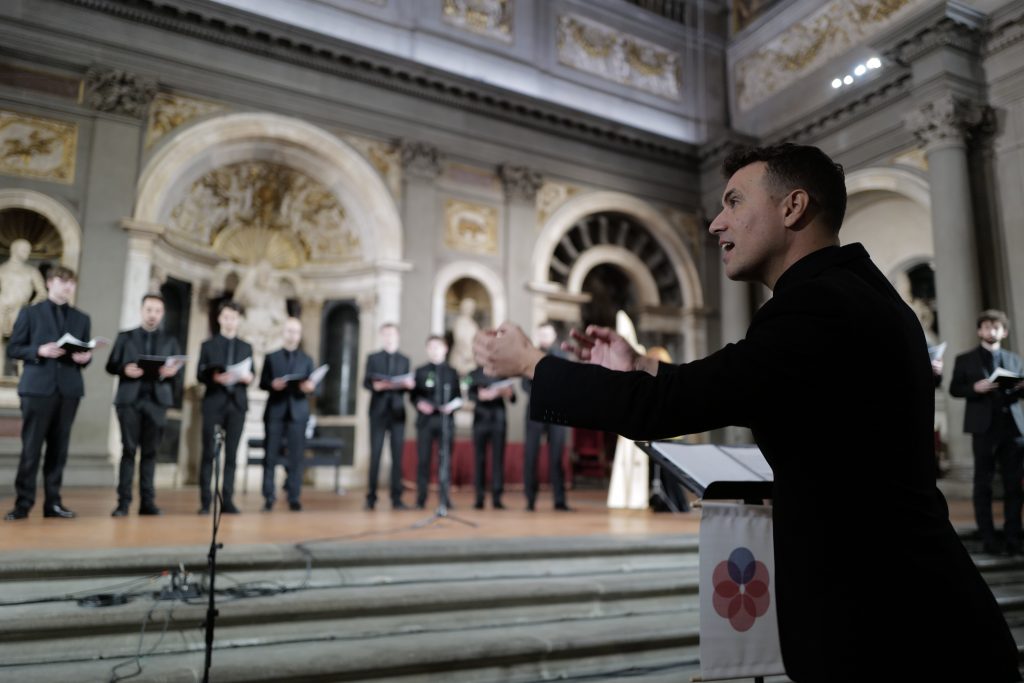
Tell me about Vox Medicea.
I can get an idea of the music by playing it through on the piano, but the real test is when the music is put in front of professional singers. For me this moment is the equivalent of cleaning the dust of a fresco and finally seeing the vibrant colours shine through, as after centuries of silence, the music once again finds its voice. To that end, we have established a professional choir, Vox Medicea, a London-based ensemble made up of the very best specialist singers of sixteenth-century music. These guys are really the commandos of choral singing! We are planning a concert in December in Florence to present some of this recovered music for the first time in centuries. Our aim is to perform, record and tour, so that we can have a definitive idea of the sacred sound of the Florentine Renaissance.
What’s next for the Florence Choral Course?
The Florence Choral Course is our educational programme and is entirely free to all students. It is a vital part of our work to promote this wonderful repertoire and to foster the next generation of exceptional choral singers. Our next course will be in summer 2024, which we aim to make even bigger and better! Applications will open on January 1 and we welcome applicants from young aspiring professional singers from all over the world. We also encourage people to get involved in what we are doing as patrons or supporters, gonfaloniere on our council, and help to bring this unique opportunity to as many of these exceptional young singers as we can.
The Florence Choral Course, Vox Medicea and Sacred Music Programme are entirely funded by private donors. Get involved in this important research project by emailing sacredmusic@mascaradeopera.com or making a donation here.
Tax benefits are available for donations made in Italy, the UK and US.

